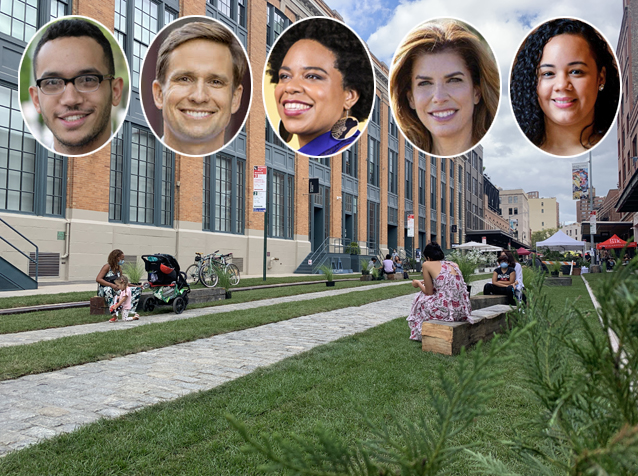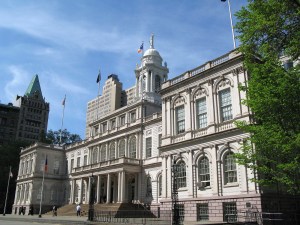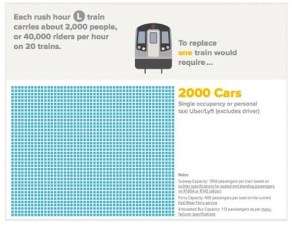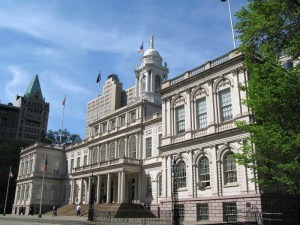Incoming Manhattan Council Members Tell Us Their Transportation Priorities
Six districts are getting new representatives — perhaps the most progressive crop the borough has seen. We took their temperature.

Manhattan will welcome six new City Council members among its 10-member delegation when the body convenes in January (incumbent Council Members Carlina Rivera, of the East Village; Keith Powers, of the Upper East Side; Diana Ayala, of East Harlem; cruised to primary victories; and former Council Member Gale Brewer won her primary). Given the heavily Democratic makeup of the borough, we can presume that winners of the Democratic primary will enter the Council. (Certified results here.) So we reached out to each in order to see what he or she has as a top transportation priority. Earlier we looked at new Brooklyn, Queens and Bronx lawmakers.

District 1 — Battery Park City, Chinatown, Financial District, Little Italy, the Lower East Side, NoHo, SoHo, TriBeCa, Washington Square
Housing activist Christopher Marte won a hotly contested, nine-candidate primary to represent the district led by term-limited Council Member Margaret Chin. A progressive, Marte took street-safety positions that largely aligned with the movement for walking, biking and transit, and he got the StreetsPAC endorsement. Marte did not respond to requests for comment.
District 3 — Chelsea, Hells Kitchen, Greenwich Village, Hudson Square, Times Square, Garment District, Flatiron, Upper West Side
Erik Bottcher, the chief of staff of the outgoing, term-limited Council Speaker Corey Johnson, bested several contenders, including gadfly anti-busway lawyer Arthur Schwartz, to represent this West Side liberal stronghold. Bottcher, who spearheaded Johnson’s pro-active-transportation initiatives, such as the Streets Master Plan, portrayed himself as a street-savvy guy in the mode of his mentor. Here is what he told us when we asked, “What’s your top priority after Jan. 1, 2022?”:
We need to build out our protected bike lane network, especially on 10th Avenue in Chelsea and Hells Kitchen, and on Sixth Avenue in the Village. I regularly ride a Citi Bike along those routes and it’s extremely dangerous. We also need more secure bike parking throughout the district. Bike corrals provide storage for dozens of bikes in a single parking space.
Many of our subway stations still lack elevator access, which is a big problem, especially at stations like the 23rd Street C/E station that serve a large population of seniors and wheelchair users. Getting an elevator at this station in particular is one of my top priorities. We must also refurbish the West Fourth Street station, and the 50th Street C/E station. We need the once-promised 7 train subway station at 41st Street and 10th Avenue. This station should have been built when the 7 expansion was first constructed, but it was not, and that was a big mistake. The residents and small businesses of Hells Kitchen would benefit greatly from this station.
Finally, I want to work with the community to explore the conversion of some roads from car usage to park space and open space for our residents. It’s been done elsewhere successfully and we should explore doing it at select locations in our district.
District 5 — Upper East Side’s Yorkville, Lenox Hill, Carnegie Hill, Roosevelt Island, Midtown East, Sutton Place, El Barrio in East Harlem
Julie Menin, a longtime city official who worked as Consumer Affairs commissioner under Mayor Bloomberg and as head of the Office of Media and Entertainment under Mayor de Blasio, won the nod over several other street-savvy candidates — including lawyer Billy Freeland, journalist Kim Moscaritolo and disability-rights crusader Rebecca Lamorte — for the seat currently occupied by Ben Kallos. Menin, who advanced a forward-thinking plan to narrow the FDR Drive in favor of the East River Esplanade, nonetheless turned her attention to more quotidian matters in her remarks on the present question. She said:
We need to continue investing in our bus and subway systems and bike lane infrastructure to decrease reliance on cars. Reducing car reliance is imperative to fighting climate change by cutting greenhouse gas emissions, and it makes our City safer by reducing traffic deaths. In the wake of a pandemic which decimated public transit ridership, we must work to make public transit as safe, accessible, and efficient as possible.
In my district, a top priority to reduce car reliance and make our public transit system better is investing in bus rapid transit. We have prime candidates for Select Bus Service with the M31 (York Avenue and 57th Street crosstown), the M57 (57th Street Crosstown), the M101 (Lexington Avenue and 3rd Avenue) all ranking as some of the slowest bus lines in the city. Further, we should create an M15 Select Bus Service stop on East 72nd Street, to better sync the Second Avenue Subway with our bus system. Finally, we must enhance the usage of transit signal priority for existing bus lines to make travel more efficient and reliable. So many residents of District 5 rely on our bus system every day to get to work, to receive medical care, and to go about their lives. We need better service and I am looking forward to working with them to strengthen our system and thus fight climate change and reduce traffic fatalities.
Shaun Abreu, a tenants-rights lawyer, won a multi-candidate primary in this district, which is now represented by Council Member Mark Levine. He said:
I’m looking forward to championing alternative modes of transportation — not only to combat climate change, but also to eliminate transit deserts and promote a more equitable transit system. I am dedicated to ensuring a swift delivery of the Streets Master Plan, creating safer streets and corridors, beautifying public spaces, improving accessibility throughout my district, and working with federal and state allies to invest in our deteriorating public transportation infrastructure.
A few weeks ago, Washington Heights made national headlines after a thunderstorm flooded a subway stop and forced people in my district to wade their way to the surface. This is the result of decades of disinvestment in our public infrastructure. I never want the neighborhood where I grew up to get this kind of negative attention again. I don’t want anyone to worry about how they’re going to get to their job or their school or to see their family. We can do so much better than that.
Kristin Richardson Jordan earned her victory over incumbent Council Member Bill Perkins in a race so narrow, it required a recount. An advocate of free public transportation, Jordan advanced a number of progressive proposals, including rescinding the criminalization of e-bike use on the Hudson River Greenway for delivery workers. She said that the most pressing problems on Harlem’s streets are that 125th Street sees high rates of traffic and pedestrian injuries/fatalities and unacceptably slow bus speeds. She wants a better balance of Citi Bike in the district (bikes now cluster around 125th Street, and are scarcer north of 145th) and to ensure that the Second Avenue Subway, if it ever reaches the district, works optimally for the benefit of East Harlem. She said:
I would enthusiastically support the additions of more protected bike lanes, dedicated bus lanes, and busways in District 9. I’m inspired by Transportation Alternatives’s 25×25 challenge, to take back more public street space for the people.
The Open Street facilitated by the Frederick Douglass Boulevard Alliance has been a wonderful and welcome addition to the neighborhood during the COVID-19 pandemic. I would like to see Open Streets continue even after the pandemic, and am interested in finding ways to support and expand other sections of open streets in the district that haven’t been usable by pedestrians and bikers in practice.
Harlem desperately needs safe bike and pedestrian connections to the Bronx. Crossing any of our bridges requires navigating complicated, five or six-way intersections with cars entering and exiting highways at very fast speeds. These routes aren’t even safe for cars, judging by the mirrors, bumpers, and hubcaps that litter the roadways up here.
Assembly Member Carmen de la Rosa, a one-time chief of staff to term-limited Council Member (and transportation Committee Chairman) Ydanis Rodriguez, won this seat over several other strong contenders from the heavily Latino area. Heavily congested Washington Heights is the site of a new busway and surrounding neighborhoods suffer a plague of drag racing. De la Rosa said that her campaign “was grounded in the principles of equity and justice” and that “transportation is an essential tool in struggle for social, environmental, and economic justice.” Specifically, she said:
The expansion of Bus Rapid Transit and ADA accessibility will be essential to improve service and provide transportation equity in District 10. In addition to increasing city funding for the MTA, I will for advocate and organize for more and state and federal funding of the MTA to improve capacity, modernize stations, and signals and other infrastructure.
Complete streets and small business development projects to support street vendors and micro-entrepreneurs via vendor plazas and pedestrian-friendly marketplaces need to be developed in coordination with local residents and businesses.
If the pandemic taught us anything that we must prioritize our outdoor and green spaces. I look forward to continuing the expansion of open streets and fund transportation infrastructure and transportation alternatives.



